Varieties and selection of magnifiers

Most people have had to use a magnifying glass at least once. Some people need it all the time: for work, for practicing arts and crafts, for reading. And to read the information printed on any product, in principle, it is impossible without a magnifying glass.

What it is?
Conducting some industrial or household processes is impossible without the use of a magnifying glass. Working with radio components, operations in watch factories, in the jewelry industry and in many other segments require repeated approximation of small details.
-
A magnifying lens is often used for embroidery, beading, even by people with good eyesight, not to mention how it is sometimes necessary with poor eyesight.
-
The optical device is able to significantly enlarge small details - the magnification factor depends on the number of diopters in the lens.
-
The magnifiers themselves have a wide range of types, designs and functionality. The design can be extremely laconic or represent a complex device with different options: fasteners, lighting, holder, etc.


The optical lens is a transparent glass made using special technologies... It differs from the traditional one by higher transparency (transparency), as well as uniformity and colorlessness. Glass in a magnifier has normalized dispersion (scattering) and refraction (refraction).
Lenses are made from a wide variety of materials (acrylic, glass, optopolymer), it all depends on the purpose of the device.
-
Glass and polymer options unable to withstand severe mechanical stress.
-
Acrylic plastic differs in strength, however, the increase effect is lower, as well as the period of effectiveness.

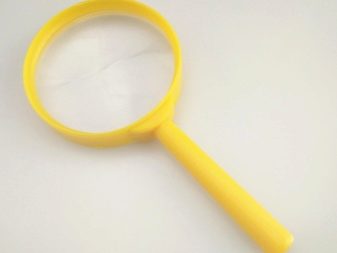
In addition, there is a separate type of devices - electronic digital models. In the manufacture of such magnifiers, digital technologies are used - such a magnifier can be connected to a laptop or stationary computer, TV, monitor. Approximation is possible from 55x and higher, such devices are capable of photographing and saving images.

There are certain legal requirements for this type of device: LCD monitor from 4 inches, lens sizes not exceeding 16x10x3 cm, durable case, charger, DVI-cable and case.
Views
The task of a magnifying glass is to approximate the surface of an object. The magnification is the number of diopters in the lens. The more of them, the stronger the approximation, and the better you can see all the details. The market offers devices for work and household needs in a large assortment:
-
sentries;
-
cereals;
-
aspherical;
-
measuring;
-
viewing and medical.

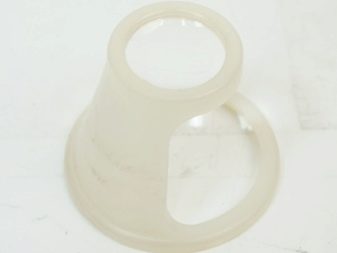



All of them are designed and manufactured with the purpose in mind. Another difference is the way of using:
-
manual;
-
on a tripod and forehead;
-
electronic and attachment.
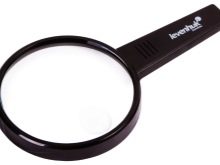


In addition to manual options, other options have many advantages, the most important of which is hands-free. Eye and forehead models are in demand in the jewelry, watch, and electronic spheres. Textile magnifiers on a tripod are very popular in the segment of applied art (embroidery, lace weaving). Stationery magnifiers are used by philatelists, numismatists, electronic models are suitable for people with low vision.


Optical systems have several options.
-
Biconvex... They are referred to as "collecting" glasses and do not have a very close approximation.
-
Double lens... Made of two glasses without bonding, they are good for correcting distortion of shades.
-
Achromatic... The peculiarity of the manufacture is the connection of diffusing and collecting lenses, as a result of which a high magnification factor and the possibility of color correction are achieved.
-
Triplet system - the result of gluing three lenses. These are the most powerful and distortion-free magnifying glasses.


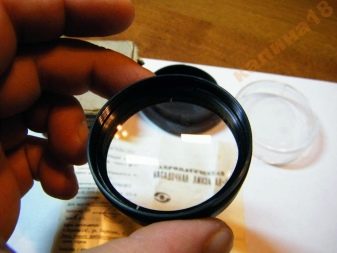
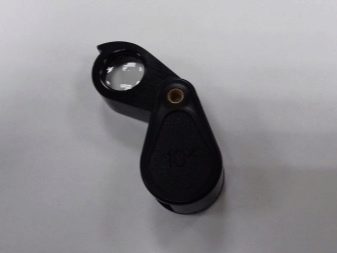
The structure of different types of loops depends on the specifics of use and the principle of operation. A tripod device can be on a clothespin, a digital magnifier with a flashlight, and a tabletop one often consists of folding parts. The magnifier can be miniature pocket, large, round, rectangular or square.


Manual
As a rule, the manual type is the simplest and most budgetary.... The products are intended for domestic use, such as reading small print. Manual models are in demand among people with impaired vision, give a small increase, allow you to see barcodes, small drawings, texts, diagrams, maps and more. They have a comfortable and secure frame, but have the disadvantage of having to hold them in your hand. The device has a laconic design: a handle and a frame with a lens inside. The frame and handle can be made of wood, metal, the most budgetary material is plastic.
Advantage: low price, light weight, availability - a small model can be bought at any store and kiosk. As a rule, they do not have a protective case to protect the lens during storage or falling.
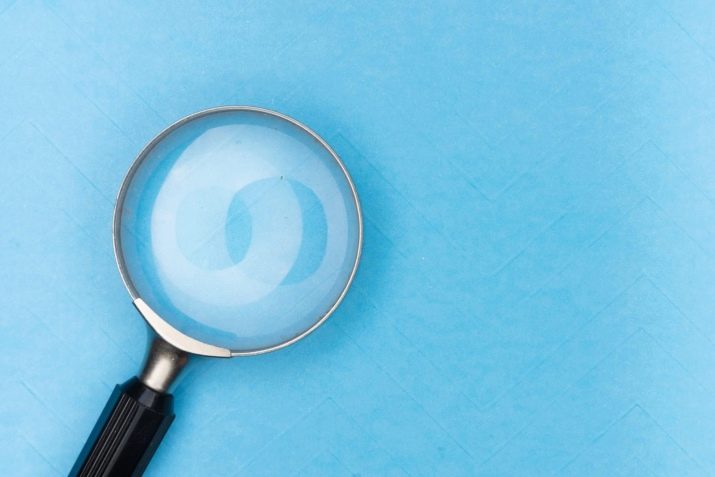
Electronic
This type of enlarger is used by people with visual impairments.... The magnifier gives a good magnification, does not require training to use, it helps to read and write. Its increase - 25-27x without distortion. The device can be connected to TV, large monitor.
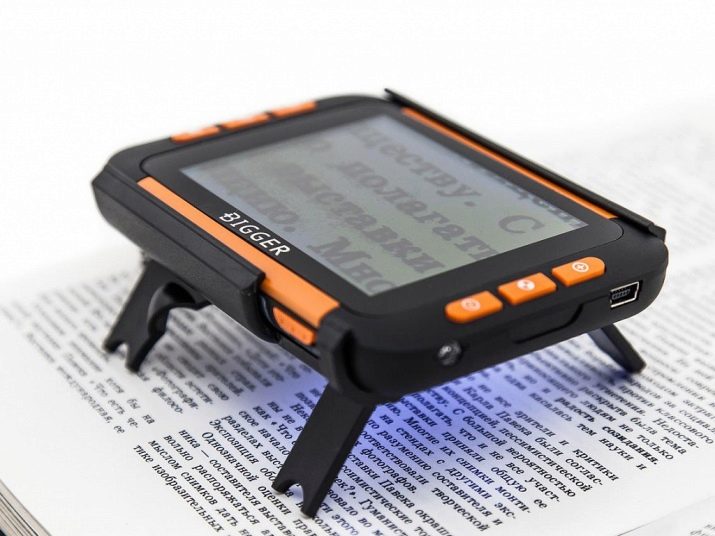
Advantages:
-
no distortion;
-
sufficient magnification;
-
the ability to fix an enlarged surface;
-
color correction modes, image output to a separate monitor or TV, as well as smooth image change.

Device types.
-
Portable... Weight up to 150 g.

- Digital... Enlargers of this type have a large weight (up to 2 kg) and a maximum approximation.The image is transferred to the TV screen or computer monitor. The models have the ability to customize the color rendering parameters, which greatly facilitates the use of the device for people with certain visual impairments.

- Stationary... Models of this type are equipped with a tripod with a clamp or a clothespin and have maximum functionality. There are options for floor or table installation. Some magnifiers can be removed from a tripod, used as a portable design.

The popularity of electronic models is growing every day, they are mastered even by elderly people who find it difficult to get used to innovations.
Tabletop
This type is widely used in both household and professional activities. With a table magnifier, you can see the smallest details. It is a design with a large magnifying lens to provide an ample viewing area. The lens is mounted on a swivel or gooseneck arm, sometimes with a clamp, which allows it to be attached to a table top or shelf.

There are models with backlighting, LED or fluorescent, and the LED version is more practical - it excludes the hit of shadows on the surface, less electricity is consumed. Fluorescent lighting is a lower price, but also strong heating of closely spaced surfaces, as well as a short service life. Tabletop models can be miniature, on a stand, with a clamp.

The latter can be considered economical in terms of the occupied area - fastening to the table surface with a clamp practically does not take up the usable area.
Applications
Magnifiers are used in many areas of industry as well as in the service sector. The ability to multiply the surface from which any manipulation is performed greatly facilitates the task, many operations are simply impossible without a magnifying glass.

Industries where magnifiers are used:
-
medicine;
-
archeology;
-
cosmetology;
-
radio engineering;
-
forensics;
-
chemistry, botany, biology, cartography;
-
jewelry, electronics industry and more.




It's not worth talking about use in everyday life - you rarely find a home where there is no magnifying glass, even if all family members have full vision. It is almost impossible to read the accompanying text on any product without a magnifying glass, and in many other ways it makes everyday problems easier.

In cosmetology, without a magnifying lamp, it is impossible to accurately determine the condition of the skin, hair and nails, to diagnose and prescribe the correct care technique. Moreover, cosmetology also solves some medical problems, such as:
-
acne and post-acne;
-
demodicosis and increased pigmentation;
-
rosacea, rosacea, neoplasms, scars, scars and stretch marks, moles and warts.

Treatment of these problems is impossible without preliminary examination, and here you just need a magnifying glass. Manufacturers have equipped magnifiers for this purpose with platforms on wheels or special mounts. The power of such a lamp is 3-12 diopters. Need a magnifying glass for manicure and pedicure service.

Modern dental offices are equipped with powerful binocular magnifying lamps, and this allows you to study the oral cavity in the smallest detail and assess the existing problems. These are not all the advantages of this type of magnifier. Design features provide high comfort in work, allow a specialist doctor to work at some distance from the patient. Ophthalmology also requires a similar device so that the doctor can assess the condition of the cornea. With its help, foreign bodies are removed from the eye, operations are performed to replace the lens, and are used in some technological processes and in everyday life.

It is impossible to imagine an architect without a magnifying glass - he needs it when studying plans and drawings of historical and modern buildings. He will need a magnifying glass during his acquaintance with the ancient schemes that have come down to our times. Despite the age of computer capabilities, modern technologies are unable to rid mankind of applied labor. A stationery survey magnifier is needed for numismatists, a textile one for embroidery, a scholar's cognitive set for children also contains a small magnifying glass.

How to choose?
Before buying a device, you need to determine the parameters for yourself, guided by which you can make the right choice. The most important of these will be the appointment. Based on this, the required number of diopters is determined, that is, the power of increase. The larger it is, the higher the level of detail.
Indicator 3D-image gets an approximation of 1.75 times, and 5D – this is an approximation of 2.25 times.
-
For reading, choose a magnifying glass with a magnification of 1 to 5x.
-
Products 3-15D are suitable for numismatists, watchmakers, philatelists.
-
Applied art and handicrafts are usually performed comfortably at a multiplicity of 2.5-3x.
If we are talking about helping people with very serious visual problems, then in this case they opt for a more powerful lens with 10x magnification or more.


As for the design features of the selected magnifying glass, they are also different. If at home when reading it is convenient to use a magnifying glass with a handle or a linear magnifier, then a folding option is more appropriate on the road.
A good choice when both hands should be free is the stand model or the forehead model. Tripod magnifiers allow you to adjust focal length and magnification power.
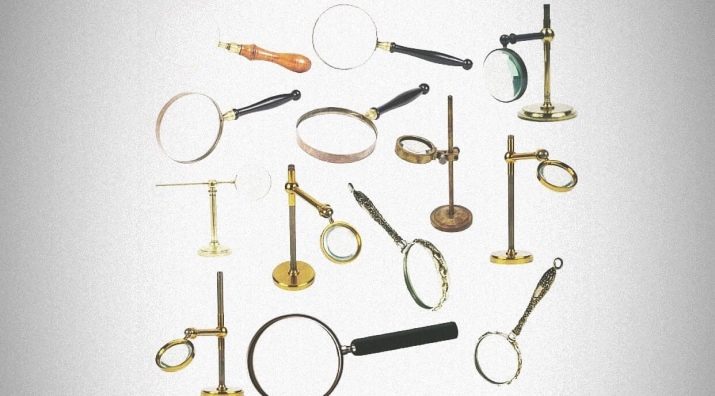
How to use?
Buying a magnifier does not guarantee a perfect magnification of the surface. You must know how to use the device. To correctly increase the required point, the device is installed close to the object in question. Then, looking at it with a magnifying glass, the focus is corrected. To do this, the distance between the pattern and the lens is changed, decreasing or increasing, thereby achieving an ideal image. The lens must be close to the eye to ensure that the object is visually close and that the surface is detailed.

The effect is provided by the falling of the image rays into the eyeball at a much greater angle than when looking with the naked eye. As for the condition of the location of the magnifying glass near the eye, this must be taken literally.
The lens really needs to be as close as possible without blocking the light rays.
The peculiarity of the magnifier is that this simple device can be used by people with completely different vision qualities. Both those with poor and normal vision use the same magnifier, adjusting the magnification by the distance between the lens and the eye. Another fun magnifying glass effect: using the back side visually removes objects, which is used by people with farsightedness.









